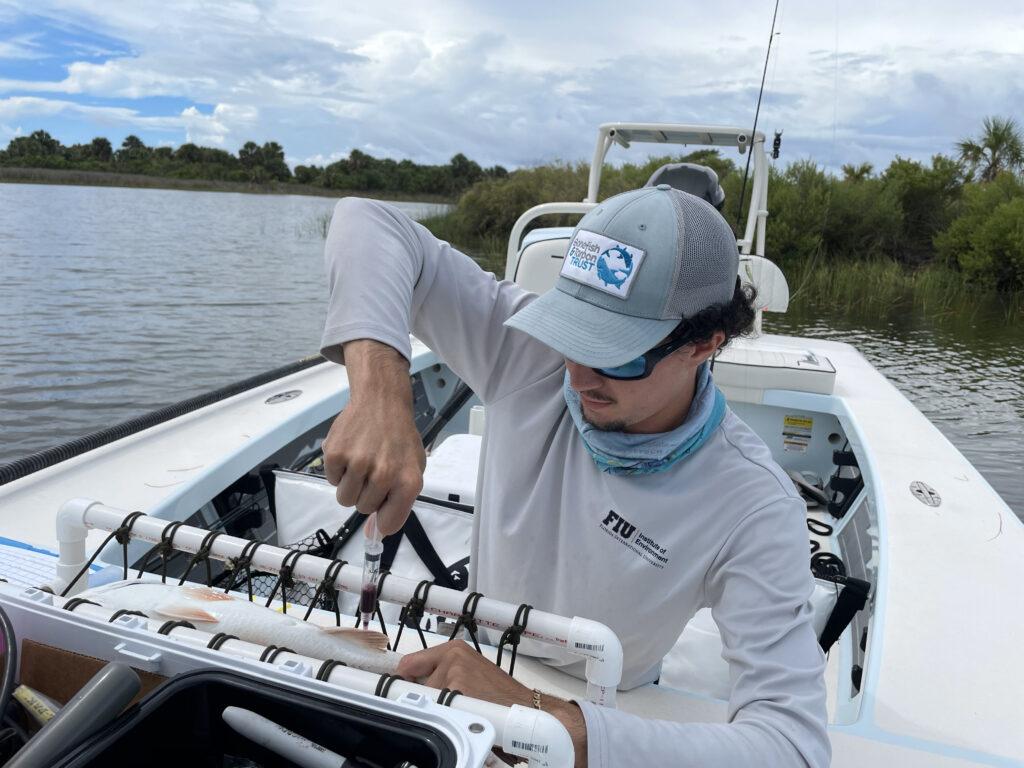Drugs pervade red drum in bay
Most everyone who takes to the Apalachicola Bay waters knows boating under the influence can be a serious problem.
But how many have stopped to think that the fish themselves might have a substance abuse issue as well?
A study released last week by Florida International University’s Coastal Fisheries Research Lab found that among the state’s estuaries, Apalachicola Bay had the highest average number of pharmaceuticals in the blood of its red drum, just above that of Tampa Bay.
The Redfish Pharmaceutical Contaminants Study, a year-long research project funded by the Bonefish & Tarpon Trust, sampled the blood and muscle of 113 Florida red drum for 94 commonly prescribed pharmaceuticals in nine estuaries. These also included Pensacola, Cedar Key, Charlotte Harbor, Florida Bay, Northern Indian River Lagoon (on the Atlantic Coast of the state), St. Augustine and Jacksonville.
On average, researchers detected 2.1 pharmaceuticals per red drum; only seven had zero pharmaceuticals.
But in the case of Apalachicola Bay’s red drum, also known as redfish or simply red, the average among the 17 pharmaceuticals detected throughout the sample was 3.3 drugs per fish, with five being the most concerning.
Both the opioid Tramadol and the antiarrhythmic cardiovascular agent Flecalnide were found in all the fish sampled, with Donepexil, used for treatment of Alzheimer’s and dementia, in nearly three out of four of the fish sampled, and the stimulant caffeine in just below half the sample. The drug Flupentixol, used as an antidepressant and for treatment of schizophrenia, was in a very small number of the reds, but was above safe levels when it was present.
Andy Distrubell, manager of the FIU lab, and Dr. Jenn Renhage, a coastal and fish ecologist and associate professor at FIU’s Institute of Environment, collaborated on the study, which expands a previous bonefish study by looking at pharmaceutical pollution on a broader scale for Florida’s estuarine waters.

“Bonefish are protected and only in South Florida. There are redfish all over the state,” said Distrubel. “We felt redfish was the perfect study species. We’d find them and use this as something to have cleaner water in the future.”
Another key reason why redfish made an ideal study is that they are a very residential fish that tends to frequent the same area, for the most part inshore, in seagrass flats and mangrove habitat. Juveniles are found in fresh or brackish waters, and then spawn near shore and offshore.
“They won’t move from one estuary to another,” he said. “Bonefish cover a lot more ground, they’re a heavily migrating fish, and bonefish stick more to more marine waters.”
The study found that about one in four of the reds had levels of pharmaceuticals above a safe level. These levels were established by determining the therapeutic effect found in humans, and then extrapolating that amount down to what the effect would be on fish. Distrubel said that while the fish sampled in Apalachicola Bay had a higher number of pharmaceuticals in their bodies, the levels of pharmaceuticals, at least so far, were on the low end, well below that of most all the other estuaries.
The presence and levels of these pharmaceuticals does not pose a hazard to humans, he said, as someone would have to eat an unimaginably gluttonous diet of steady reds, about 48,000 filets, to get a full dose.
But, he cautioned, the long-term effects of this low exposure remain unknown. “It hasn’t been studied,” Distrubel said. “The body can only metabolize so much.”
The immediate concern, he said, is what effect the presence of these drugs have on the population of reds, or other similar species that dwell in the bay.
“In other studies that we’ve read and what we’ve seen is these fish may have different behavioral consequences,” he said. “The fish would be less social, may not want to school up and become more likely to be predated on.
“Or the fish won’t spawn, and there will be a smaller spawning population, and we’ll have smaller yield,” Distrubel said. “We haven’t seen physiological effects, mostly behavioral.”
He noted that studies have shown prey species also have more contaminants, as there are bioaccumulates within the food chain. “It’s not only in the water, it’s in the stuff they’re eating,” said Distrubel.
The takeaway message of the FIU study is that pharmaceutical pollution can be addressed by upgrading wastewater treatment methods and by stepping up the ongoing effort to convert septic systems to residential wastewater treatment.
“We need to responsibly take care of medication disposal,” he said, noting that the method used in Europe, ozonation, is the most cost-effective and produces clean water that can be reused safely.
“It will take out the majority of them,” Distrubel said.
“Florida’s $13.9 billion recreational fisheries depend upon healthy habitats and good water quality,” wrote the study’s authors. “These results provide more evidence of the ongoing need for significant investment in Florida’s water infrastructure.”



Meet the Editor
David Adlerstein, The Apalachicola Times’ digital editor, started with the news outlet in January 2002 as a reporter.
Prior to then, David Adlerstein began as a newspaperman with a small Boston weekly, after graduating magna cum laude from Brandeis University in Waltham, Massachusetts. He later edited the weekly Bellville Times, and as business reporter for the daily Marion Star, both not far from his hometown of Columbus, Ohio.
In 1995, he moved to South Florida, and worked as a business reporter and editor of Medical Business newspaper. In Jan. 2002, he began with the Apalachicola Times, first as reporter and later as editor, and in Oct. 2020, also began editing the Port St. Joe Star.